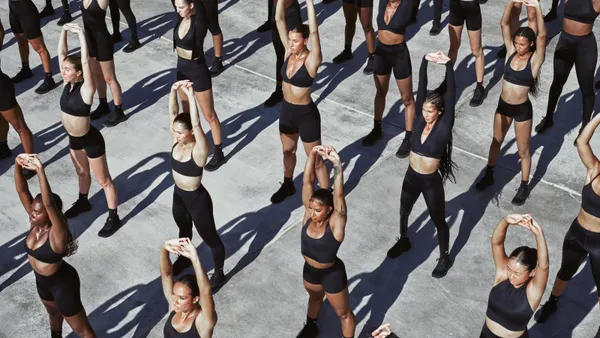Dive Brief:
-
Old Navy is the latest major brand to get into subscriptions, offering a $69.99 (plus tax) box every three months with designs aimed at kids ages five to 12, without membership or styling fees, according to its website.
-
Customers choose from styles including "Trendsetter," "Sporty," "Classic," "Preppy," "Playful," "Cool" or "Surprise Me," along with size and gender, and Old Navy’s stylists select six mix-and-match items to send. The Gap Inc. brand says the boxes contain merchandise valued at over $100.
-
Customers have 21 days to try on the items and receive $10 off their next box if they keep them all. Style preferences can be changed, shipments can be postponed or skipped and subscriptions can be canceled at any time. Sizing changes must be made by the customer and, while returns are free, they can’t be made at stores.
Dive Insight:
The subscription model has gained speed in recent weeks. Old Navy joins its sibling Gap brand in introducing a children’s apparel service, along with Under Armour, which last month debuted a service it’s calling ArmourBox.
It's a model meant to gain regular orders and sticky customers that, despite its growth in recent years, remains largely untested, particularly in apparel sales, which involve especially complex logistics. In fact, most apparel subscription boxes aren’t really subscriptions at all, but more of a membership model with plenty of opportunities — as with these Old Navy outfit boxes — to adjust, cancel or time the arrival and content of the boxes.
"The subscription-based approach works well in retail for repeatable consumables, which means when consumers need to renew every four weeks at most," Isabelle Roussin, chief solution expert at omnichannel solution provider SAP Hybris Billing, told Retail Dive in an email last year. "Some retailers have stood out in their subscription models by bundling the subscription with the right loyalty programs as well as offering discounts on cross-line of products."
Companies like Harry’s and the Dollar Shave Club have upended the so-called razor/razorblade model of commerce through their subscription services. They've done that mainly by ensuring that the replenishment package (which may also come with add-on goodies like shaving cream) arrives on a regular basis. But sales at Dollar Shave Club, acquired by Unilever last year for $1 billion, have sputtered despite a continued marketing push to acquire customers. That suggests the company's subscription model may have a limited niche among consumers.
When it comes to fashion, the logistics are complicated by a host of variables, like style and fit, that are not nearly as consistent as the replenishment of known quantities of consumer product goods. That, in turn, could lead to more returned products. Those factors would seem to be only exacerbated by the unpredictable growth spurts of children.
There are apparel players successfully operating in the space, most prominently Stitch Fix, which has been in business for just five years, and which last month filed for an initial public offering. While that was widely anticipated, its prospects may be undermined by Amazon's own version, dubbed Prime Wardrobe, currently in beta.
Still, the long-term financial viability of the model remains largely unproven. Nordstrom's Trunk Club, for example, began as a concierge service for men and now also styles women. But while it gets high marks from users, Nordstrom wrote down $197 million of that business last year. Three years ago, Nordstrom acquired the service, started by Bonobos co-founder Brian Spaly (who left late last year as CEO), but it is not yet profitable and the nearly $200 million write-down represents more than half of the $350 million Nordstrom paid for it.
To stem those losses, Nordstrom last year instituted a $25 at-home try-on fee (which can be credited to a purchase) and shortened the return window. Stitch Fix similarly has a $20 try-on fee that can be used toward a purchase and generally offers prices that are lower than Trunk Club thanks to, in part, a less costly styling approach based on inputs from a questionnaire, rather than Trunk Club's direct human interaction.
It's worth considering, though, that millennials are more likely than any other generation to have a subscription service and as they become young parents, a children's apparel subscription could play well for the time-strapped consumer.














